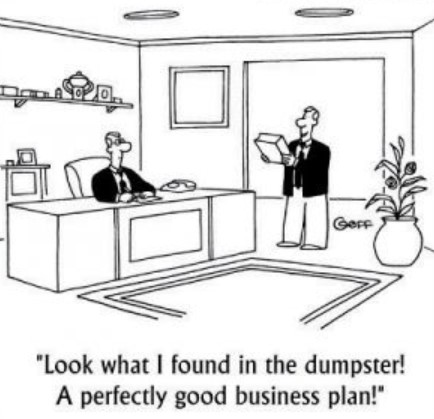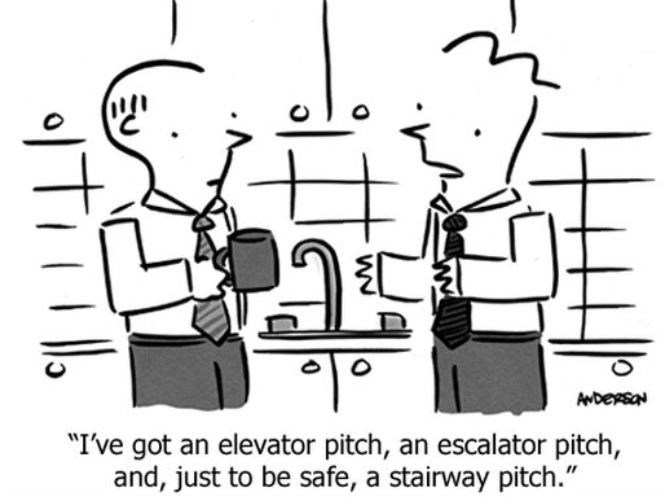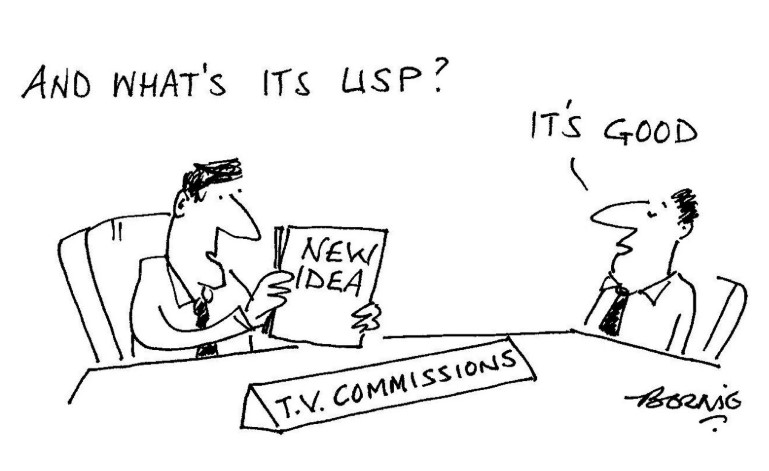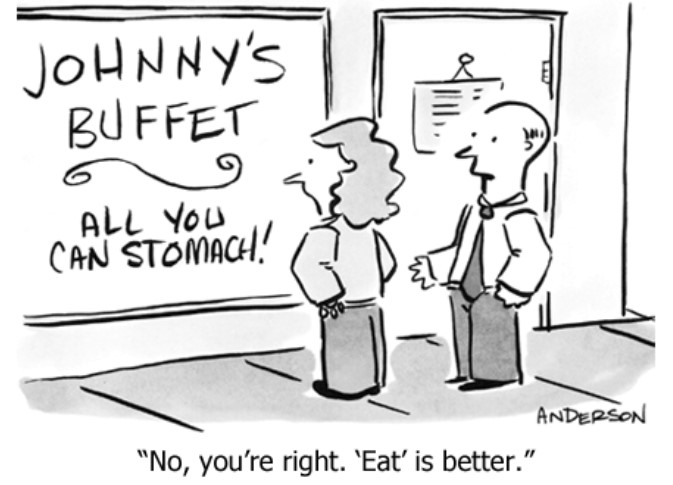Fact – the best marketing tools aren’t actually tools
Table of Contents
Or at least know its unique value and product features well enough to write decent sales copy or create powerful images.
But do they?
Well, it turns out that many copywriters, designers, advertising experts and social media marketers have real difficulty reciting some of the most basic features of the brand they are marketing.
Even if they are actually marketing their own company.
Sounds odd, right?
Worse is that if they were to ask their client’s management or the company chief, they likely wouldn’t even get a succinct answer that nailed the brand’s market positioning, value proposition or target market. Despite these being some of the most fundamental tools marketers need in order to do their job properly.
Why is that?

Often the reason is that many small companies don’t even have a clear vision of their brand, and key features have yet to be developed, put into writing and absorbed by those representing the brand.
Sometimes it is because the owner is the person responsible for the marketing effort themselves and doesn’t really know how to convey these values to the rest of the team.
Other times it is because sole traders and tradesmen believe their business name explains enough about them and they don’t see the benefit of having any ‘fancy branding’.
To resolve this lack of focus and create the fine-tuned messaging that marketing teams need in order to inspire new markets to buy your products and services, read on.
Regardless of your position in your company’s marketing machine, you’ll soon be able to get a more detailed view of your brand’s personality and be able to formulate a handful of values that will ensure you are all singing from the same songbook.
In this article, you will learn…
- Why offering competitive prices can really trash your brand
- Why a value proposition is a super handy tool everyone can use
- Why you can’t do without a unique selling point – even if you are not unique
- Why listing product features and benefits will save you time and money
- Why customers need your help in order to buy into your brand
First, let’s get one thing clear…
Your brand is not about your logo!
God forbid! Sure, some graphic designer may have once told you that they offer branding services. You paid them and they provided you with a logo graphic you can stick on your site and some office stationery you can print up.
Hey, you were swizzed, get over it. Graphics guys like to draw pictures, that’s why they became designers and not marketers or business strategists. Branding is not about your logo.
Got that? Ok.
That’s not to say your logo and colour scheme aren’t important ingredients in your corporate identity or that logo designers are worthless (Chupa Chups’ logo designer was none other than Salvador Dali!).
It’s just that there is more to branding than that.

7 components of a brand strategy
Some of the information below should be imprinted onto the minds of your marketing team – or at least written on the whiteboard in big letters so they can’t forget it. However, before we get to that, let’s remind ourselves about:
Brand strategy components:
- Purpose: What is your WHY, and does your visual messaging convey this important reason you exist?
- Consistency: Are you staying on topic with what your content says? Are images consistent? Same fonts throughout? Sticking with your colour palette and tone of voice?
- Emotion: Is whatever you’re selling something your customers feel certain emotions about? Is it cool? Does it make them proud to own it? Does it make them feel smart? If it does, are you conveying that in your messaging effectively?
- Flexibility: Are you staying relevant and interesting to your audience? While consistency aims to set the standard for your brand, flexibility enables you to make adjustments that can build interest and distinguish you from your competition.
- Employee Involvement: Do all of your employees have at least a surface understanding of what you want to convey and how you plan to do it? This helps keep consistency across the board, from the TV ad to the company picnic flyer.
- Loyalty: Do your customers know you appreciate them? Do you give them a reason to connect with you? What else can you give them to make them feel part of what you are doing?
- Awareness: Are you keeping a close eye on the competition? Sure, you don’t copy their style or content, but make sure you know who else your customer is seeing, besides you.
There are many other iterations of this list and some have even stretched it beyond the essentials to a whole catalogue of features (which may be too big to manage). So stick with the above for now. Open a new word doc and see if you can write at least a sentence for each question – but do it in a way that it applies to your business’s brand alone.
Next, we will be looking at the main ingredients your marketing specialists need in order to do their job most effectively.
5 details your team should know
1 – Elevator pitch
An elevator pitch (sometimes called an elevator speech) is a short statement that defines what you do, who you do it for and possibly how you do it. For instance, “We do this, to achieve that” or even “We do this to achieve this for these people”.

The elevator pitch is a handy phrase which should be clearly defined and, ideally, embedded into the company culture. It can be used at networking events by company chiefs and managers to attract potential clients or stimulate discussion. It can be used by sales staff that are reaching out to potential customers on the phone or in emails.
Here is an example of an elevator pitch which illustrates how one company describe what they do:
“We offer a selection of accounting services to schools, colleges and universities – but with lower fees and better rates.”
Note how the above touches on the company’s pricing, which can be a big no-no – as you will see later…
Here is Albion’s elevator pitch:
- “We help small to medium-sized businesses in the UK and US achieve ongoing growth by increasing website traffic and generating more online sales leads”
If you haven’t got an elevator pitch already, write one down now in your word doc. We will turn it into a swipe file you and your team can use later.
You can always improve it later, but the point is, you have something you can use to start describing your brand, to your staff and your potential clients. Trust us, it matters. You will need it.
2 – Unique selling point
A unique selling point (USP) is a statement about what makes you and your company different from others that sell a similar product or service.
Its main job is to create competitive differentiation. A USP is often used in marketing materials or when talking with customers who are ready to buy. You’ll find that you already use this type of proposition even if you were unaware of it.
Here are some examples:
- “We specialise in management accounting for educational organisations” (focus on speciality)
- “We guarantee to uncover your accounting irregularities or your money back” (focus of a guarantee)
- “We use a propriety tool called EduBooks! to analyse your accounting needs” (focus on a methodology)
All three of the above could be the USP of the same company – it’s just that each one focusses on different aspects of their service. Indeed, the one they use depends on what they think reflects their brand the best.

Ok, you might be in a ‘boring’ industry, like plumbing, where customers can pretty much guess what you do. As long as you are trustworthy and reliable, with a price that suits, then you have a chance of getting a good name for yourself and winning business.
But you need more than that if you are going to develop your brand in a way that can scale up and become the market leader, locally or nationally.
Maybe you “focus only on what matters” when fixing a leaky pipe and ensure your customers only have to pay for the essentials when you’re solving their problems.
Or maybe your mantra is that you “don’t cut corners” or you “leave no stone unturned”, to ensure everything is in order and they won’t need to call anyone else out in the near future.
These two are completely opposite to each other – neither is the right or wrong approach. For every type of company, there is a good USP that can help you sell your service. You get to pick one, even if you didn’t realise your brand has adopted your personal core values.
Here is Albion’s unique selling point:
- “We increase your rankings, traffic or sales (or reduce cost per acquisition) or you won’t pay a penny”
Once we knew we could offer such a guarantee, we formulated it into a USP which can be used in a variety of ways. More on that later.
Write your USP down in your word document now and hit save.
3 – Value proposition
A value proposition is a clear statement of the tangible results a customer gets from using your products or services.
Now let’s not get confused. Both the elevator speech and the USP are cousins of the value proposition, but there is one vital difference: they lack the punch of a value proposition when selling to the corporate market.
A strong value proposition is specific, often citing numbers or percentages. It can even include a quick summary of your work with other clients as a demonstration of the likely outcome. Or it can go into details of what you are actually proposing.

Here is a value prop for the accounting brand example we used before: “We help small schools to large universities reorganise their management accounting procedures in a way that reduces the cost of their employee benefits programs – without impacting staff benefit levels. One of our recent clients, a local technical college of a similar size to yours, was struggling to reduce spending in this area. We saved them over $80,000 in just four months without cutting any of the benefits their employees had enjoyed previously.”
Here is Albion’s value proposition:
- “We help brands achieve ongoing growth through a range of results-driven digital marketing services – from recruitment firms to recording studios and from universities to space companies exploring the universe. We do this by increasing their website traffic by an average of 173% and by increasing online sales conversions from that traffic by up to 57% within 6 months.”
Again, write down a few different value propositions after you have listed a bunch of facts and figures you catch yourself recounting to potential clients. You can spend as much time as you like refining it later – the important thing is that your team have something to show off about – real facts and figures they can quote whenever they need them.
4 – Market positioning
Next, we come to market positioning. But what is that exactly?
Your positioning reflects your position in relation to others in your industry and your customers’ perception of you. You can apply this strategy by emphasising the distinguishing features of your brand. For example, are your products inexpensive or premium, utilitarian or luxurious, entry-level or high-end?
The problem is, it’s no good your products being the cheapest and then switching to be the most expensive or pitching products to be an essential commodity then wording your sales copy as if it’s a luxury item.
The positioning of a product should be consistent over its entire lifetime. To reinforce this you need to implement initiatives that support your intended target market’s perceptions of your products.
So be warned – once a brand is positioned, it can be tricky to reposition it without destroying its credibility. In general, there are two broad categories of market position: cost leadership and differentiation. Let’s look briefly at each:
Cost Leader Strategy
A company using a cost leader strategy attempts to position itself as the cheapest in the marketplace. Their customers choose them because they expect basic products with no bells and whistles. It’s really tempting to tell customers you are the most affordable solution – but that can lead to a brand strategy disaster.
Differentiation Business Strategy
A company using a differentiation business strategy attempts to position itself so that customers think their products are unique and are happy to pay a bit more for them. This only works if the unique features of the product provide some added value – even if that value revolves around things like prestige.
Here is Albion’s take on positioning:
- We have a strict policy whereby we never say we are the cheapest. We aren’t and we will never compete on price with our competitors. The reason for this is that there are a thousand other benefits we can add to our services without having to have our prices dictated by the market.
- We differentiate our brand by offering only those digital marketing services we know we can exploit to get great results from. So we don’t even bother saying we do social media, email marketing or graphic design. We don’t even trust small agencies that say they are great at EVERY type of marketing.
- We aim to acquire prestigious clients in areas we are passionate about or experienced in, such as education and recruitment. Sorry tradesmen and local nail bars! We don’t even take clients that manufacture plastic consumer crap, because we don’t want to encourage businesses to produce throwaway rubbish. Sleeping well at night matters to us.
Maybe your brand has developed its own tastes and targets from your founder’s attitude. You can see how Microsoft staff seem to reflect Bill Gates’ opinion that people want computers they can program. Or Apple’s corporate culture defined by Steve Jobs’ obsession with perfect design – at any cost.
One product is always going to be cheaper than the rest, so identifying and then writing down how you want your customers to see you is a great way to illustrate your brand positioning to your staff and your market. From there you can develop and build on it.
5 – Product features and benefits
With so many businesses competing for the same customers it’s easy to think that they are all pretty similar. Of course, all plumbers fix broken leaks. All accounting firms that work with universities manage their books, etc. Whats the point in listing that?
Sure, you will have many things in common with your competitors, that’s just the way it is. However, you can really differentiate yourself from the rest – and give your marketing team heaps of handy tools to work with – by formulating specific features of your services.
Better still is that you can map the features of your offering into tangible benefits your customers will enjoy if they choose you over your competition.
Here are Albion’s main service benefits:
- Free Website Review
– Need inspiration? Want to know (for no cost) what Albion can do to help grow your business? - Unique Guarantee
– If we don’t increase your rankings, traffic or sales (or reduce cost per acquisition) you won’t pay a penny - Results-Driven
– Unlike most other agencies, our primary goal is to ensure all of our clients enjoy ongoing business growth - True Professionals
– Work directly with our company directors rather than polite (but inexperienced) account managers - Transparent Rates
– No lengthy tied-in contracts, a choice of pricing models and a free website review to get you started
Taking it a step further, you can project those benefits your customers will enjoy into clever sales copy that resolves friction or pain points. This not only removes potential customer concerns about your company, it can also tap into their emotions in a way that allows them to imagine how much better their life would be if they had your solution.
We go into more detail about writing persuasive sales copy in another post and even illustrate a number of cognitive biases your copywriters should be aware of.
But for now, just use your branding swipe file document to jot down the benefits of hiring you over others and keep on listing whatever makes you seem a better proposition than the competition.
If you know your competition cut corners, turn that around to say you don’t. If you know customers are worried about the quality of similar products, explain why yours are so good. If heaps of brands in your sector seem to be the same, make yourself a bit different.
Every cloud has a silver lining, and you can cash in on each one, as long as your team knows what makes your brand rock so much.
Other tools that can help your team
Strapline
It’s the real thing doesn’t explain that Coke is a drink. But hey, I’m loving it. Just do it. Finger lickin’ good. The best a man can get. Because you’re worth it. You get the idea. You don’t have to have a strapline.
But if you do have one it doesn’t have to describe your business. Indeed, it shouldn’t because that’s what a description is for – but it should reflect what your brand stands for.

At Albion we offer “Results-Driven Business Growth” but our strapline is “Inspire – Create – Grow“.
Why? Well, the first thing you read on our homepage explains that…
Homepage pitch
“We are a results-driven creative marketing agency that helps ambitious brands achieve their goals by inspiring them with fresh opportunities, creating the materials needed to monetise new markets and empowering them with the capabilities to manage ongoing growth.”
Buzzwords
While formulating a brand or writing marketing copy you are likely to come up with phrases and buzzwords that help make a point, express your positioning or explain your product benefits. Here are some we keep in our swipe file ready for use by anyone on the team.
- “we help ambitious brands”
- “achieve their businesses goals”
- “in the UK, the US and up in space!”
- “results-driven marketing campaigns”
- “via creative, design and marketing”
- “Inspire, Create and Grow”
Website goals
By mapping your website’s main goals to “calls to action” you hope your audience will take, you’ll need to come up with wording that not only tells them what to do, but also tells them why they should do it. Here are a few gathered up from around the site that we use elsewhere in ads, emails and other online copy.
- Fill out the form… to get a free website review
- Submit your email… to see our articles and downloads
- Give us a call… to arrange a jolly good day out at the seaside
- Contact our team… to discuss your business goals and targets
Business description
As mentioned above it’s handy to have a refined piece of copy that acts as a business description. There are heaps of places you can use this, and it saves time, because different members of staff will be trying to reinvent the wheel whenever they need to describe your brand. Here’s a version of ours:
“We are a results-driven creative digital marketing agency that helps ambitious brands achieve their goals by inspiring them with fresh opportunities, creating the materials needed to monetise new markets and empowering them with the capabilities to manage ongoing growth.
We help small to medium-sized businesses in the US and UK grow online by increasing organic google traffic (search engine optimisation) or by paid search advertising (pay per click advertising).
And we generate more leads and sales from that traffic by redesigning their website homepage or landing pages (conversion rate optimisation).
Based in the prestigious Regency Square in Brighton on the south coast of England, we help grow businesses in the UK, the US and up in space!!!”
Ok, so it’s keyword rich, it lists some key services and provides some credibility by hinting that our clients include national brands. But this wording is only a general template that we can adapt whenever we need to come up with some quick copy for use in “About Us” descriptions in…
- Press releases
- Directory site listings
- Industry articles
- Social profiles
There are heaps of other places we use adapted versions of this general template in order to provide signed-off copy that anyone can use without needing approval from management. The time it saves is worth the effort and if a member of staff comes up with better wording we build it into our swipe file so anyone can use it at a later date.
Team members who need this info
It’s not just website copywriters who need access to these core brand values and messages and it’s not just web designers who need a list of your brand guidelines. All the information you have gathered in your swipe file should be easily available to everyone on your team – from the foot soldiers in the telesales department to the chiefs who represent the brand in conferences and even in court.
Graphic Designers – need to know your pallet and style guidelines (and no it’s not up to them to choose your colours) as well as your brand’s values – how would they know if you wanted to portray a high-class product or a bargain basement one?
Web Designers – need all the wording you use elsewhere in your literature in order to craft consistent online propositions, slideshow captions, call-to-action graphics and get a feel of the user and user experience before they even create a web page.
Copywriters – need all of this stuff laid out simply so they can start playing with it and come up with new ideas and new angles for the wording on brochures, leaflets, guides, website service pages, mailouts and emails as well as blog posts, tweets and the rest of it.
Conversion Rate Optimisation Specialists – need to know your value propositions, your USP, product features, benefits points and positioning in order to create viable online sales funnels. Then they can split-test them with refined wording in each variation.
Search Engine Optimisation Specialists – need to know your core values and benefits in order to get an idea of what keywords your search market will be using, and to optimise meta data that will encourage them to click through to your site.
Advertising Specialists – need to know what wording is likely to generate high click-through rates for their pay per click campaigns and to test alternate phrasings in order to make good decisions about how to word real-world ads.
Salesmen / Telemarketers – need to know all your product’s pain points and the benefits that help ease the friction they cause. They need to know which emotions to tap into in your customers and how to best upsell, cross-sell and reassure potential clients.
Marketing Managers – need to know all of this stuff like the back of their hands (or if you don’t have it, their first job is to define it all for you) as it is they who will be guiding and overseeing the work done by all the creatives in your team.
Company Chiefs – most of all, the bosses and executives need to know exactly what your brand is, what’s good about it, why people would use your products and how you can monetise your current and potential markets. Usually, these people ‘get it’ but it’s nice for them to have it in writing so they can reassure themselves they are on-message.
Summing it up…
It’s important that your team doesn’t mix up your message, or worse, fail to illustrate to your market the key benefits your brand, products or services can offer them. Be sure to have your elevator pitch, unique selling point, value proposition, positioning and main product benefits defined in company documentation.
Remember, this can:
- Ensure your team doesn’t promise the wrong thing, such as claim you are the cheapest or best
- Ensure your team mentions the main features or benefits of your brand, service or products
- Ensure your team focusses design elements and graphics on areas you know matter to your market
- Ensure your team gets your key values imprinted in their minds, so they reinforce your brand values when communicating to existing and new markets
Sure, you are allowed to change your value proposition and other key messages whenever your brand is ready for an overhaul, but you need to be able to define them first.
And you’ll waste less time reviewing and rejecting wording your team has suggested for search engine results listings, press releases, business listings on other sites, and in your own website copy. This is what happens when wording is thrown together by team members who don’t have a natural ‘feel’ for the brand, or staff that tend to resort to claiming you are the first, the cheapest, or the best.
Because even if you are, you want customers to come to that conclusion themselves…


